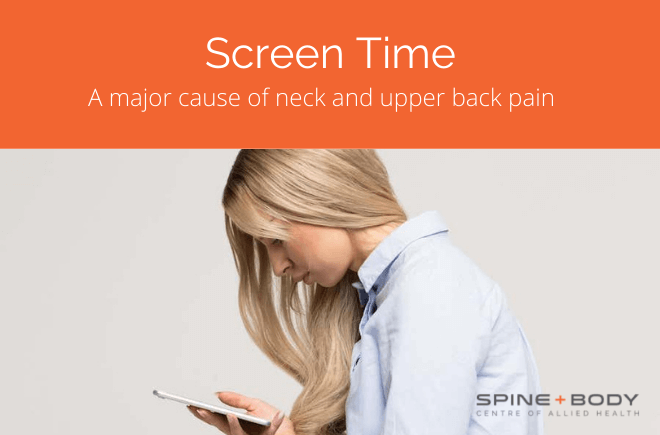Avoiding Neck and Upper Limb Pain when working overhead

By Peter Georgilopoulos, APA Sports Physiotherapist, Spine and Body Gold Coast.
All occupations have inherent risk factors usually linked to prolonged loading of body structures created through repetitive movement. These risk factors become more prevalent after years of performing the same task creating excessive load on ageing soft tissue and joint structures.
Working above your head is particularly provocative placing great force on the facet joints of the neck and upper back as well as torsional forces on the capsule of the shoulder joint.
People working with arms above their heads typically report neck pain and stiffness (often associated with a cracking or grinding sound on movement), diffuse upper limb pain which may radiate into the shoulder blade and may report frequent headaches or a ‘burning’ or numbness along the arm.
In the early stages, pain may be present only during activity but over extended periods may become unremitting even after rest from provocation.
These symptoms can be exceedingly debilitating resulting in disturbed sleep, an inability to lie on the affected side and cause functional impairment in activities of daily living such as hanging clothes on a line, washing & drying hair or driving a car.
Biomechanical causes:
Ideally, the weight of the head should be positioned directly above the cervical (neck) spine so that weight can be distributed throughout all the cervical joints evenly.
The gentle curvature of the neck exists to evenly disperse compression forces throughout the facet joints and intervertebral discs. Excessive curvature which occurs when looking up inordinately compresses the facet joints causing joint inflammation, stiffness and pain.
The ‘grinding’ sound that is often heard or felt in chronically compressed necks is generally the result of early joint degenerative changes resulting in a degradation of the smoothness of the articular surfaces of the joint. In severe cases, the erosion of the joint surface can expose pain sensitive bone leading to unremitting pain.
Joint erosion also diminishes the space between each vertebra which can irritate and possibly encroach (compress) associated nerve roots leading to referred pain, pins and needles, a burning sensation (causalgia) and in severe cases, muscle weakness.
The primary driving factor behind these changes is thoracic stiffness. The thoracic region refers to the section of spine between the neck and lower back. Roundness in this spinal region (known as kyphosis) creates a domino effect of structures being overloaded.
A rounded upper back:
- pushes the head forward and in front of the supporting spine placing greater compressive force on joints.
- necessitates increased curvature of neck posture backwards to allow vision to remain horizontal otherwise vision would be increasingly directed towards the ground.
- results in internal (inwards) rotation of both shoulders. This places increased force on the anterior portion of the rotator cuff and stretches the posterior capsule of the joint. Persistent loading can lead to shoulder pain and possibly partial or full thickness tears of the rotator cuff.
Preventative strategies:
It is vitally important to maintain mobility in the thoracic spine.
Achieving an upright posture between your shoulder blades, re-aligns the head above the neck. This immediately unloads joints and nerves in the neck which may be causing pain and de-compresses the nerves at the base of the skull which may be causing recurrent headaches.
Straightening of the thoracic spine also corrects excessive internal rotation of the shoulders and can be instrumental in enabling chronic rotator cuff tendonitis to heal.




